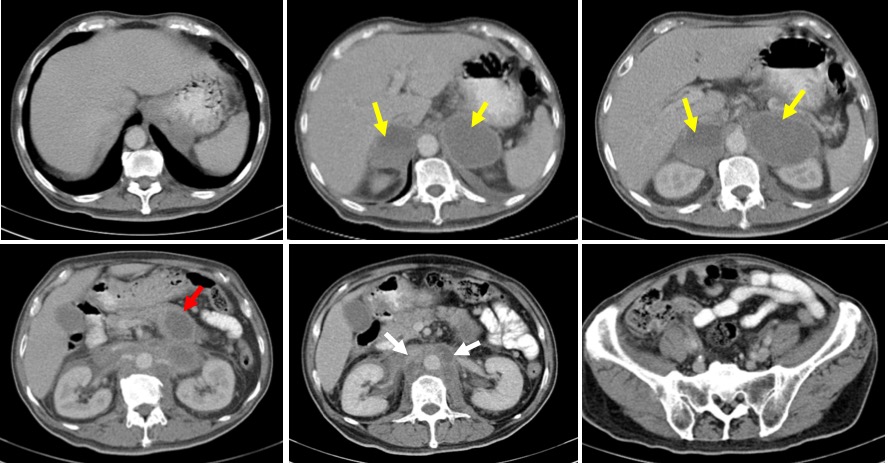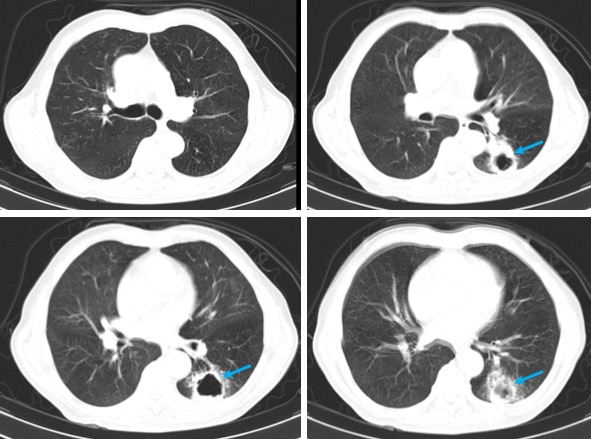Case contribution: Dr Radhiana Hassan
Clinical:
- A 67 years old man
- Underlying HPT
- Presented with chronic cough for 3 months
- No fever, no loss of appetite
- Loss of weight
- Clinically crepitation at left lower zone
- CXR shows a cavitating lesion in the left lung, confirmed by CT scan
- Biopsy: non-small cell lung carcinoma
- CT abdomen and pelvis performed for staging

CT scan findings:
- Large adrenal mass bilaterally, larger on the left side (yellow arrows)
- It shows homogenous enhancement, no calcification within.
- A hypodense lesion is also seen in the tail of pancreas (red arrows)
- Multiple enlarged paraortic paracavl nodes (white arrows)

Diagnosis: Stage IV lung carcinoma with bilateral adrenal metastases.
Discussion:
- Adrenal metastases are common in lung cancer. It is usually solitary and asymptomatic, found incidentally during staging of lung cancer.
- Unilateral involvement is more prevalent on the left side (ratio of 1.5:1)
- However, the pattern of metastasis is known to be unpredictable. Some shows extensive involvement of lymph nodes and other visceral glands while some shows involvement of visceral gland and no involvement of the nodes.
- There is no clear consensus as to whether adrenal metastasis in lung cancer occur through lymphatic or hematogenous spread.
- If adrenal is the only site of metastasis, 50% of the metastases are ipsilateral. However if adrenal metastases are present with other sites, the typical ipsilaterality rate is lower at 25%.
- Patient with ipsilateral adrenal metastasis have lower systemic disease and less likely to have other distant metastasis compared to contralateral adrenal is involved (20% versus 60%).
- Bilateral adrenal metastases are seen in 3% of lung cancer and is usually associated with diffuse systemic spread of primary disease.

Recent Comments